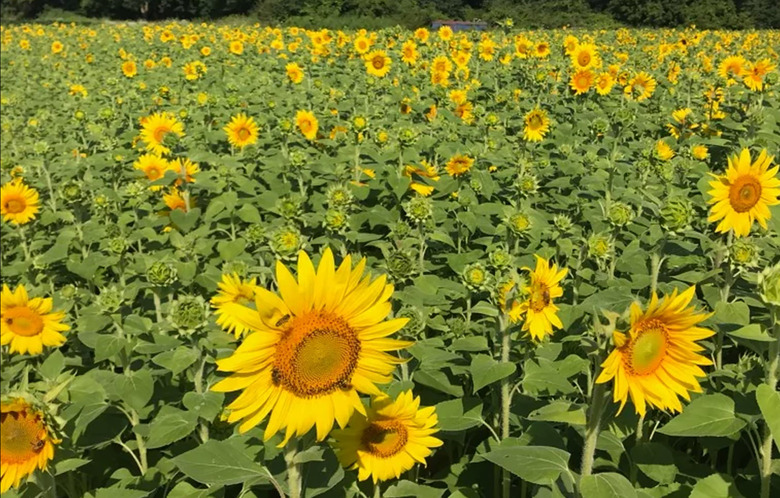Plants Wake Up With The Sun Just Like We Do, Scientists Say
We don't really think of plants as life forms that require sleep, and while it's true that plants don't "sleep" in the way that animals do, they operate on a circadian rhythm all the same. Researchers have long been fascinated with the mechanisms and schedules that govern the life of a plant, and new research suggests that when morning comes, plants are some of the first to "wake up."
The study, which was published in the journal Molecular Plant, examined the activity of various genes within the plants in the early morning hours. What the researchers found was that by the time the Sun is ready to peek above the horizon, plants are ready and waiting to begin their day. It's this regular schedule that helps plants exploit the best conditions for collecting energy from sunlight, as well as providing opportunities to pollinators like best to do what they do best.
Maximizing efficiency is a big deal for plants. Depending on the region where a plant is growing and the specific location within that region, sunlight and water aren't guaranteed. Plants can't travel in search of the things they need, so they have to take advantage when they can and make the most of it.
To get a better idea of how plants react when the Sun begins to creep above the horizon, researchers from multiple universities teamed up and conducted an interesting experiment. They took samples of a type of flowering plant known as thale cress every two minutes as the Sun rose. With these samples, the team was able to identify waves of activity happening within the plant as the morning grew brighter.
"We set out to characterize 'dawn burst' dynamics in more detail, focussing on the expression of transcription factor genes. We found three distinct gene expression waves within two hours after dawn. The first of these occurs just 16 minutes after dawn and lasts only 8 minutes," Dr. Martin Balcerowicz, first author of the paper, said in a statement.
"Many of these genes are known to be sensitive to light and temperature, but we wanted to find out specifically how the transcription of these genes is coordinated. Interfering in photoreceptor signaling, the circadian clock and chloroplast-derived light signals did cause problems in some genes' expression, but there was a large proportion of genes still unaffected. This indicated to us that some of the upstream pathways are redundant and that additional regulators are in play."
Put simply, the plants may be reacting to each new day in the same way that many animals do. We have natural circadian rhythms that keep us in check, making sure we wake up in the morning and feel tired at night, but we are also affected by sunlight, which stimulates us in other ways. Plants appear to have taken this two-pronged approach as well, with redundant systems to ensure they "wake up," whether it's out of habit, or due to the presence of bright light.
"Characterizing the peak we see in gene expression that results from the onset of light is useful in helping us to understand how plants respond to light and, in particular, for crops grown under artificial lighting, how this dawn burst impacts longer term on growth," Dr. Daphne Ezer, senior author of the study, noted.
